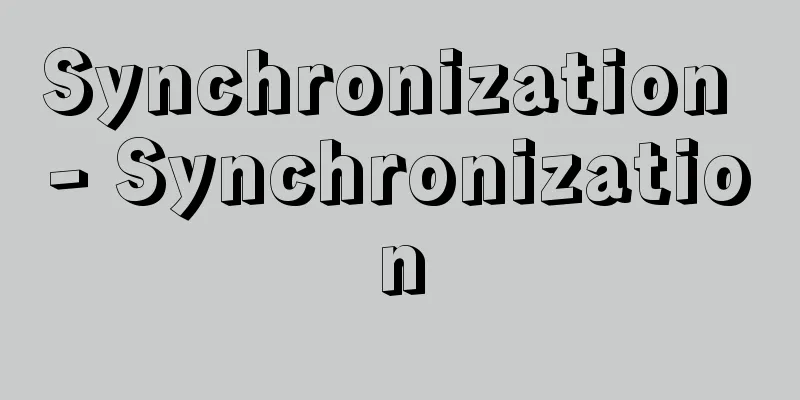National taxes

|
This refers to taxes levied and collected by the national government. It is used in contrast to local taxes levied and collected by local governments. [Masatoshi Hayashi] National tax revenues and expendituresModern nations are also called tax nations, and instead of owning the means of production and engaging in production activities to secure the necessary revenue, they collect a portion of the net production from the private economy in the form of taxes and use them for various financial needs. In many countries, including Japan, the public sector has both a central government and local governments, but the central government is often idiomatically called the country. Therefore, national taxes refer to taxes levied and collected by the country, i.e., the central government, and are used in opposition to local taxes levied and collected by local governments. In Japan's fiscal year 2007 (Heisei 19), the total amount of national and local taxes was 92.9226 trillion yen, with national taxes accounting for 56.7% and local taxes for 43.3%. National taxes can be classified into direct and indirect taxes, with the main direct taxes being income tax (17.3%) and corporation tax (15.9%), while the main indirect taxes are consumption tax (11.1%), gasoline tax (2.3%), and liquor tax (1.6%). Local direct taxes accounted for 37.1% and indirect taxes for 6.2%. The main direct taxes were resident tax (17.8%), property tax (9.4%), and business tax (6.3%), while the main indirect taxes were local consumption tax (2.8%) and diesel collection tax (1.1%). The figures in parentheses indicate the percentage of the total amount of national and local taxes. However, not all national tax revenues are directly spent on the execution of national affairs. In Japan, a portion of the revenue is used as the source of local allocation tax, which is allocated to local governments for the purpose of adjusting the financial strength of local governments. For a long time after the war, the source of local allocation tax was 32% of the three national taxes, income tax, corporate tax, and liquor tax, but this portion can be considered as local tax revenue as a shared tax. In developing countries and other situations where the tax administration capacity is not fully developed, the shared tax system, in which a certain percentage of the national levies and collections are considered to be local tax revenue, is recommended. In Japan, consumption tax and tobacco tax were later added to the national taxes, making it five taxes, and a certain percentage of these tax revenues is set as the source of local allocation tax. In fiscal 2007, the amount is equivalent to 32% of the estimated income tax and liquor tax revenues, 34% of the estimated corporate tax revenues, 29.5% of the estimated consumption tax revenues, and 25% of the estimated tobacco tax revenues. Furthermore, with regard to the various local administrative tasks carried out by local governments, the national government is interested in their quality and quantity from the perspective of ensuring the national minimum (the minimum standard of living guaranteed to the people), and attempts to ensure the quality and quantity of local services by providing specific subsidies known as national treasury disbursements, with part of national taxes being used as the source of these funds. Local tax revenues accounted for 44.2% of total local government revenues in fiscal 2007, with local allocation taxes accounting for 16.7% and specific subsidies known as national treasury disbursements accounting for 11.3%. The sources of funds for these local allocation taxes and national treasury disbursements are collected as national taxes, but are transferred to local governments and ultimately disbursed by local governments. There are many options for what taxes should be used to raise the necessary financial resources for the national and local governments, and how these taxes should be distributed between the national and local governments. In addition to the general tax principles, there are several local tax principles for local taxes, but there is no national tax principle. If Japan plans to further decentralize its powers in the future, it may be possible to select taxes that meet the local tax principles as local taxes and distribute the remaining taxes as national taxes. There are taxes whose tax revenues fluctuate wildly due to economic fluctuations and other factors, lack stability, and are concentrated in certain local governments. Since these taxes are inappropriate as local taxes, it would be desirable to transfer a portion of the national taxes collected to local governments as a shared tax and use it as a local allocation tax for the purpose of redistribution, or to cover part of the expenses of local affairs for which the national government shares some responsibility in the form of specific subsidies. [Masatoshi Hayashi] "Financial and Monetary Statistics Monthly, Special Feature on Taxation" (Published by the Printing Bureau of the Ministry of Finance since 2001. The Special Feature on Taxation is published around April every year)" ▽ "National Tax Agency Statistical Yearbook, various editions (Ministry of Finance and Monetary Association)" [Reference items] | | | | | | | | | | | | | |Source: Shogakukan Encyclopedia Nipponica About Encyclopedia Nipponica Information | Legend |
|
国が賦課・徴収する税をいう。地方公共団体が賦課・徴収する地方税に対して用いられる。 [林 正寿] 国税の収入と支出現代国家は租税国家ともよばれ、国家が自ら生産手段を有して生産活動に従事し、必要な歳入を確保するのではなく、民間経済の純生産の一部を租税というかたちで徴収し、さまざまな財政需要にあてる。日本を含めた多くの国において、公共部門には中央政府とともに地方政府が設置されているが、中央政府はしばしば慣用的に国とよばれる。それゆえ国税とは国、すなわち中央政府が賦課・徴収する税をさし、地方政府が賦課・徴収する地方税に対峙(たいじ)して用いられる。 日本の2007年度(平成19)決算においては、国税と地方税の総額は92兆9226億円であり、国税は56.7%、地方税は43.3%を占める。国税は直接税と間接税に分類できるが主要直接税には所得税(17.3%)、法人税(15.9%)があり、主要間接税には消費税(11.1%)、揮発油税(2.3%)、酒税(1.6%)がある。地方税の直接税は37.1%、間接税は6.2%である。主要直接税には住民税(17.8%)、固定資産税(9.4%)、事業税(6.3%)があり、主要間接税には地方消費税(2.8%)、軽油引取税(1.1%)がある。なお( )内の数値は国税と地方税の総額に占める比率を示す。 ただし、国税収入のすべてが国の事務遂行のために直接支出されるわけではなく、日本ではその一部は、地方公共団体間の財政力調整を目的として地方公共団体に交付される地方交付税の財源として用いられる。地方交付税の財源は戦後長期にわたり所得税、法人税、酒税という国税3税の32%であったが、この部分については分与税として地方の税収とみなすことができる。開発途上国などにおいて税務行政能力が十分に発達していない状況下では、国の賦課徴収する一定比率を地方の税収とみなして徴収する分与税方式が推奨されている。日本では、その後消費税とたばこ税が加わって国税5税となり、その税収の一定比率が地方交付税の税源に設定されている。2007年度においては、所得税および酒税の収入見込額のそれぞれ32%に相当する額、法人税の収入見込額の34%に相当する額、消費税の収入見込額の29.5%に相当する額ならびにたばこ税収入見込額の25%に相当する額である。 また、地方公共団体の遂行する各種地方事務についても、国はナショナル・ミニマム(国民に保障される最低生活基準)の確保という観点からそれらの質と量に関心をもち、国庫支出金とよばれる特定補助金を交付して地方サービスの質と量を確保しようとするが、国税の一部はこれらの財源として用いられる。地方の歳入のうち地方税収の比率は2007年度において44.2%であり、地方交付税が16.7%を、国庫支出金という特定補助金が11.3%を占める。これらの地方交付税や国庫支出金の財源は国税として徴収されるが、地方に移転され、地方公共団体により最終支出される。 国や地方公共団体などの必要な財源をどのような税により調達するか、また、これらの税を国と地方公共団体との間でどのように配分すべきか、さまざまな選択の余地がある。租税一般についての租税原則に追加して、地方税については地方税原則がいくつか定められているが、国税原則というものはとくに存在しない。日本が今後地方分権を充実させていく場合に、各種税のなかから地方税原則にかなう税を地方税として優先的に選択し、残余の税を国税として配分するという選択も考えられる。税収が景気変動などの影響を受けて激しく変動し安定性を欠いたり、特定の地方公共団体に偏在する税が存在する。これらの税は地方税としては不適当であるので、国税として徴収した一部を分与税として地方に移転して再分配を目的とする地方交付税としたり、また地方事務であっても国がある程度の責任を分担するものに対して、その一部の経費を特定補助金の形で負担する、という形が望ましい。 [林 正寿] 『『財政金融統計月報、租税特集』(大蔵省印刷局、2001年より財務省印刷局発行。租税特集は毎年4月ごろ発行)』▽『国税庁『国税庁統計年報書』各年版(大蔵財務協会)』 [参照項目] | | | | | | | | | | | | | |出典 小学館 日本大百科全書(ニッポニカ)日本大百科全書(ニッポニカ)について 情報 | 凡例 |
Recommend
Limbourg, H.de (English spelling) LimbourgHde
…Three Franco-Flemish painters from the Netherlan...
Souslin, MJ (English notation) SouslinMJ
…The position advocated by Broel is called intuit...
Otaki Road - Otaki Road
But it remains a mountain of faith, and the sight...
Kim Ch'ǒnt'aek (English name)
A sijo (traditional Korean poem) writer and poet o...
Alkaline spring - Alkaline spring
... Acid springs have a strong ability to dissolv...
Count and Duke of Olivares (English spelling: Conde‐Duque de Olivares, Gaspar de Guzmán y Pimentel)
1587‐1645 A favorite of King Philip IV of Spain. H...
Onojo [city] - Onojo
A city in the mid-west of Fukuoka Prefecture. It w...
Acclimatization - Acclimatization
Also known simply as acclimatization, this is the...
"Ibu Shurinron" - Ibu Shurinron
...The progressive faction that accepted these te...
Maring, Hendricus
Born: 1883. Rotterdam [Died] 1942 Dutch socialist ...
Essentialist - Essensharisutto (English spelling) essentialist
A school of educational thinkers belonging to Ame...
Francisco de Zurbarán
A master of Spanish painting in the 17th century....
Othensve
...Population: 184,000 (1996). The name of the to...
Toji Temple Documents
A general term for the collection of documents han...
Psittacula cyanocephala (English spelling)
…Parakeet [Takashi Saito]. . . *Some of the termi...









